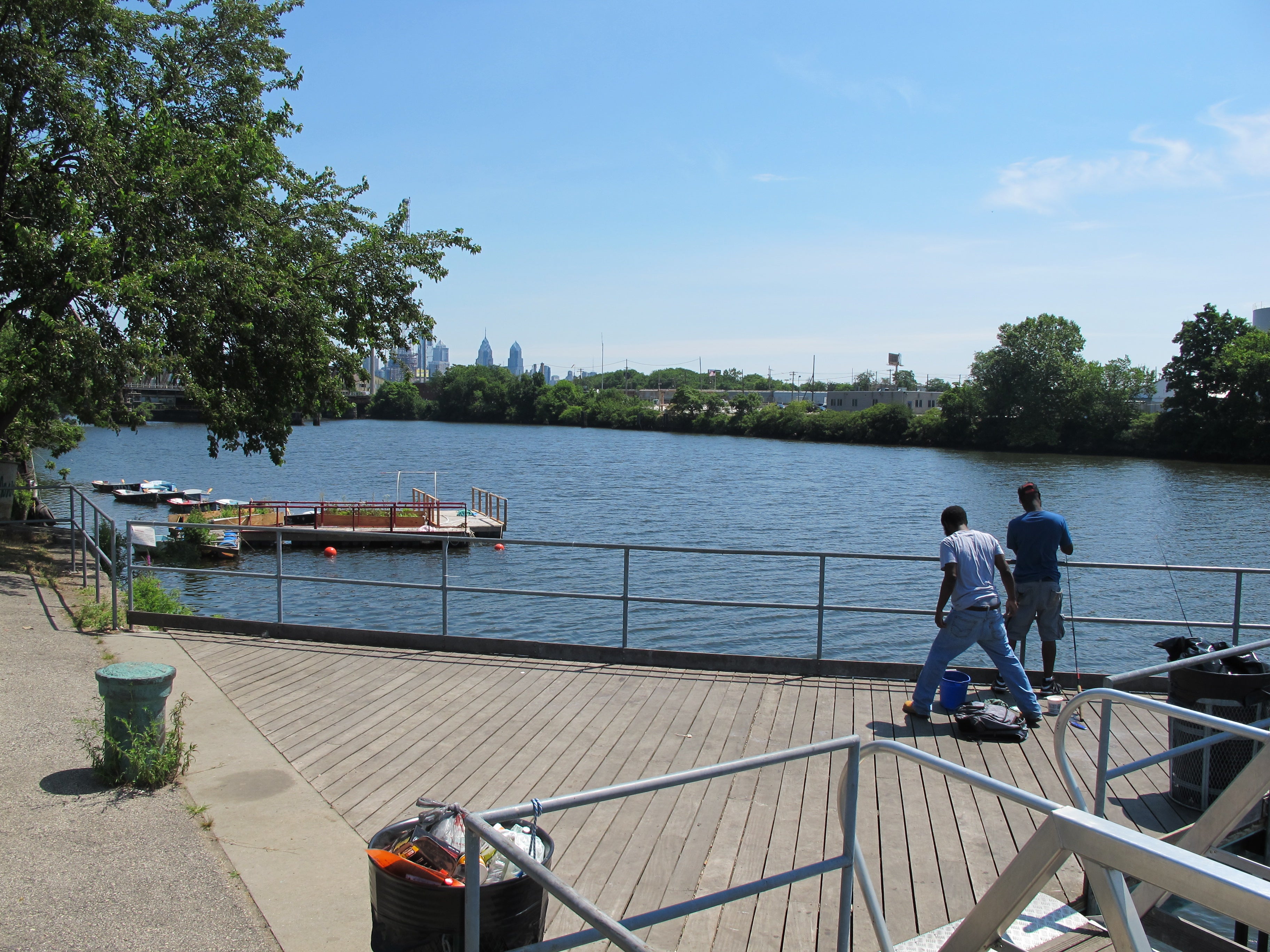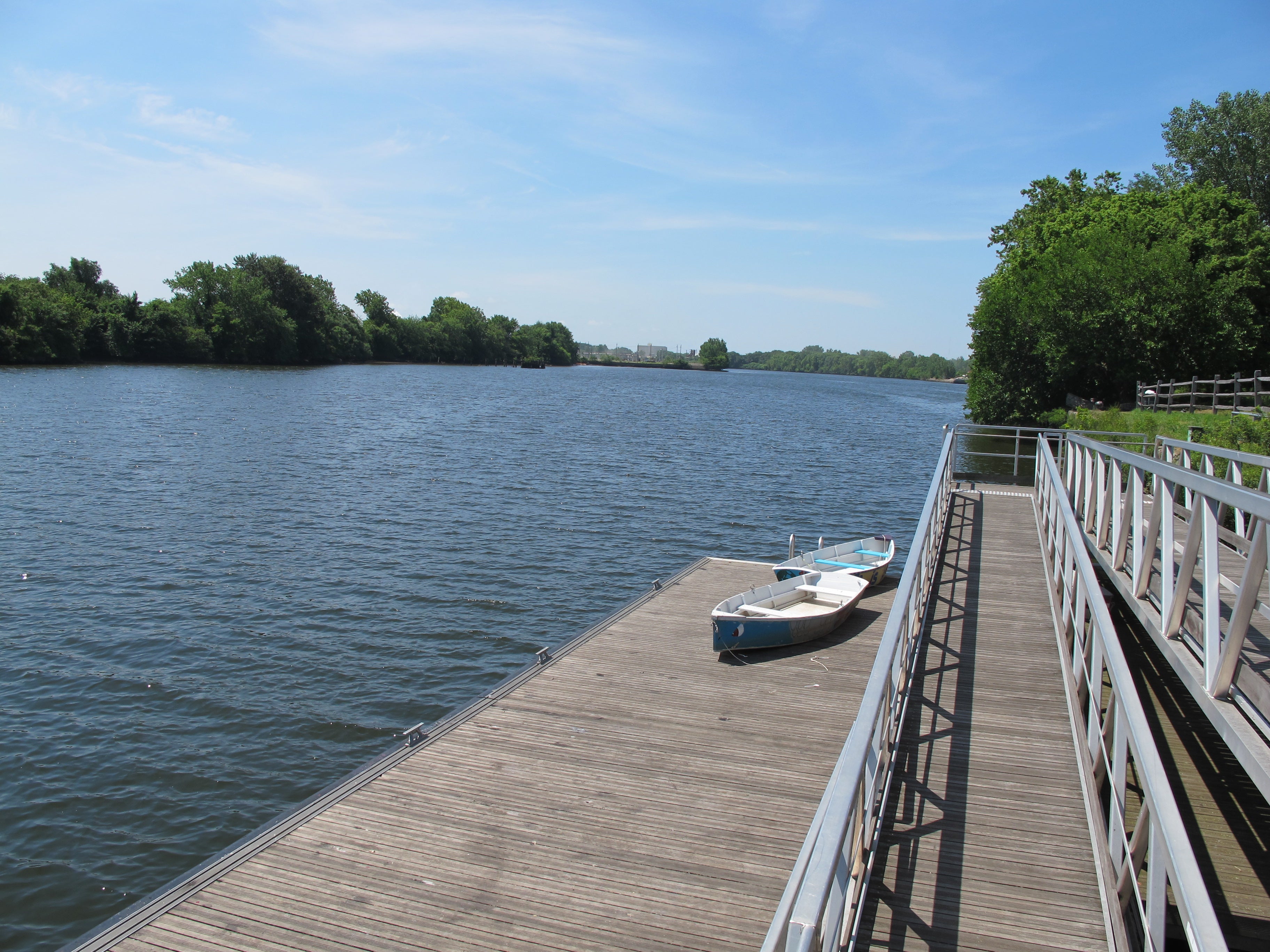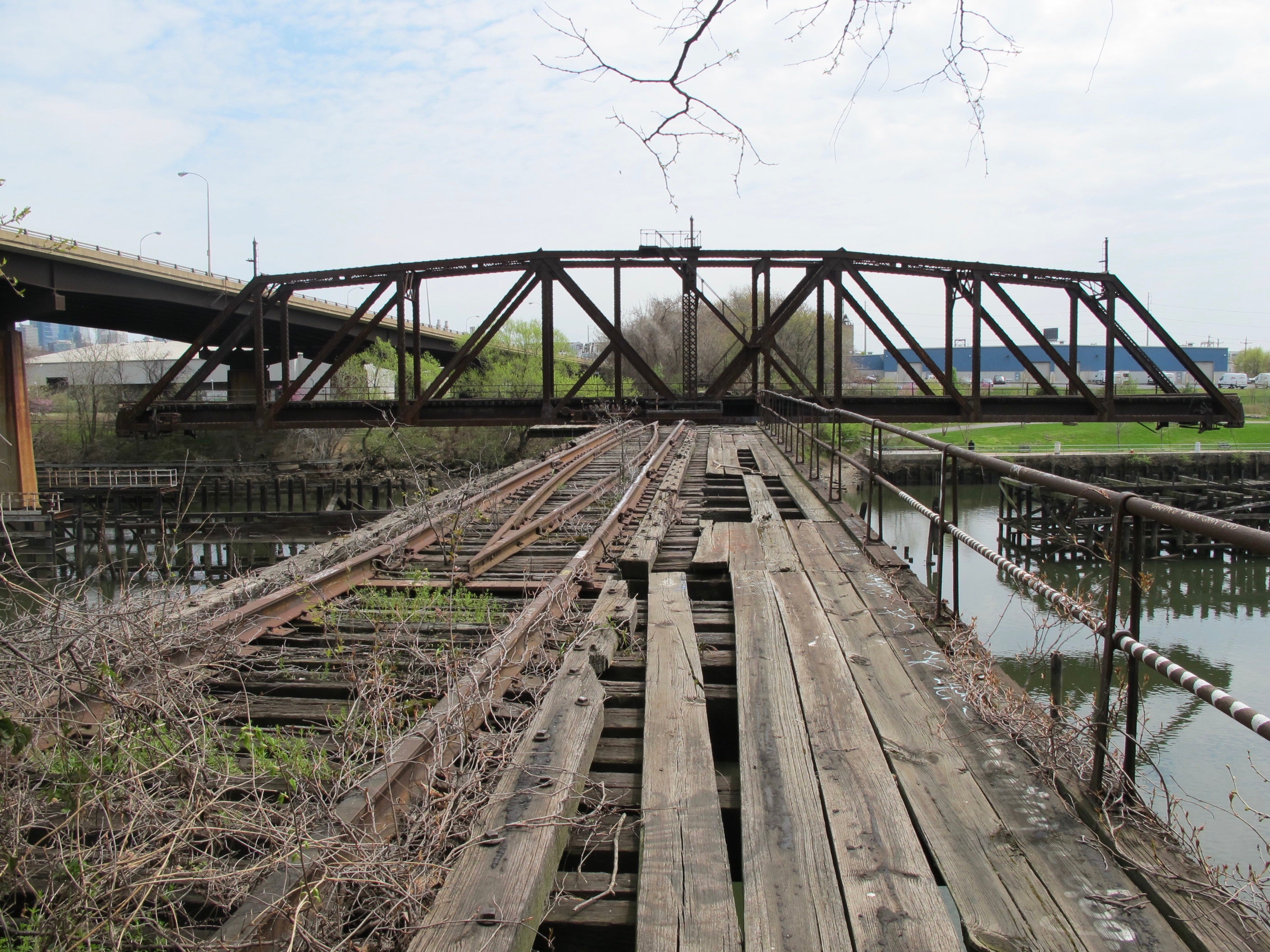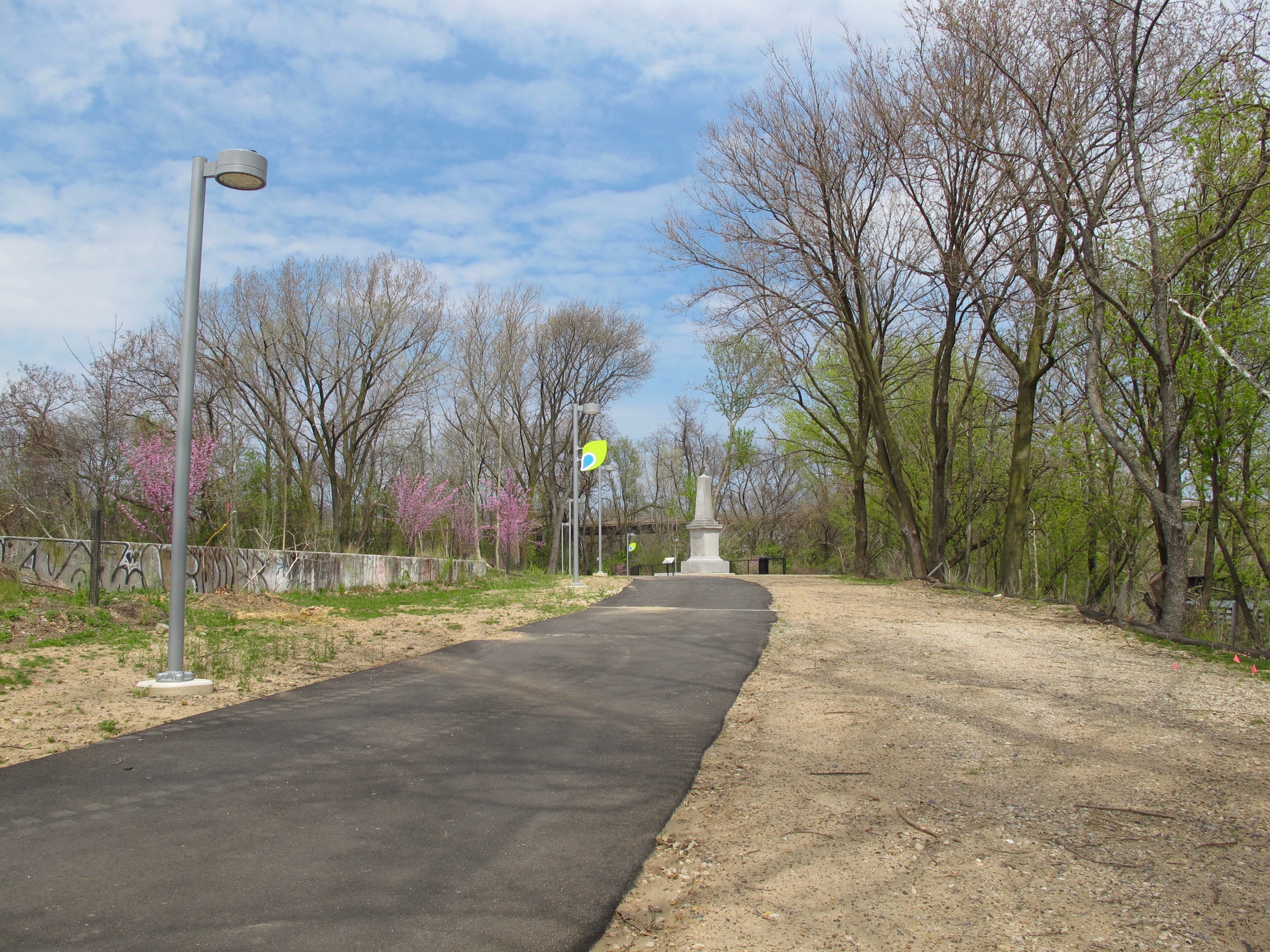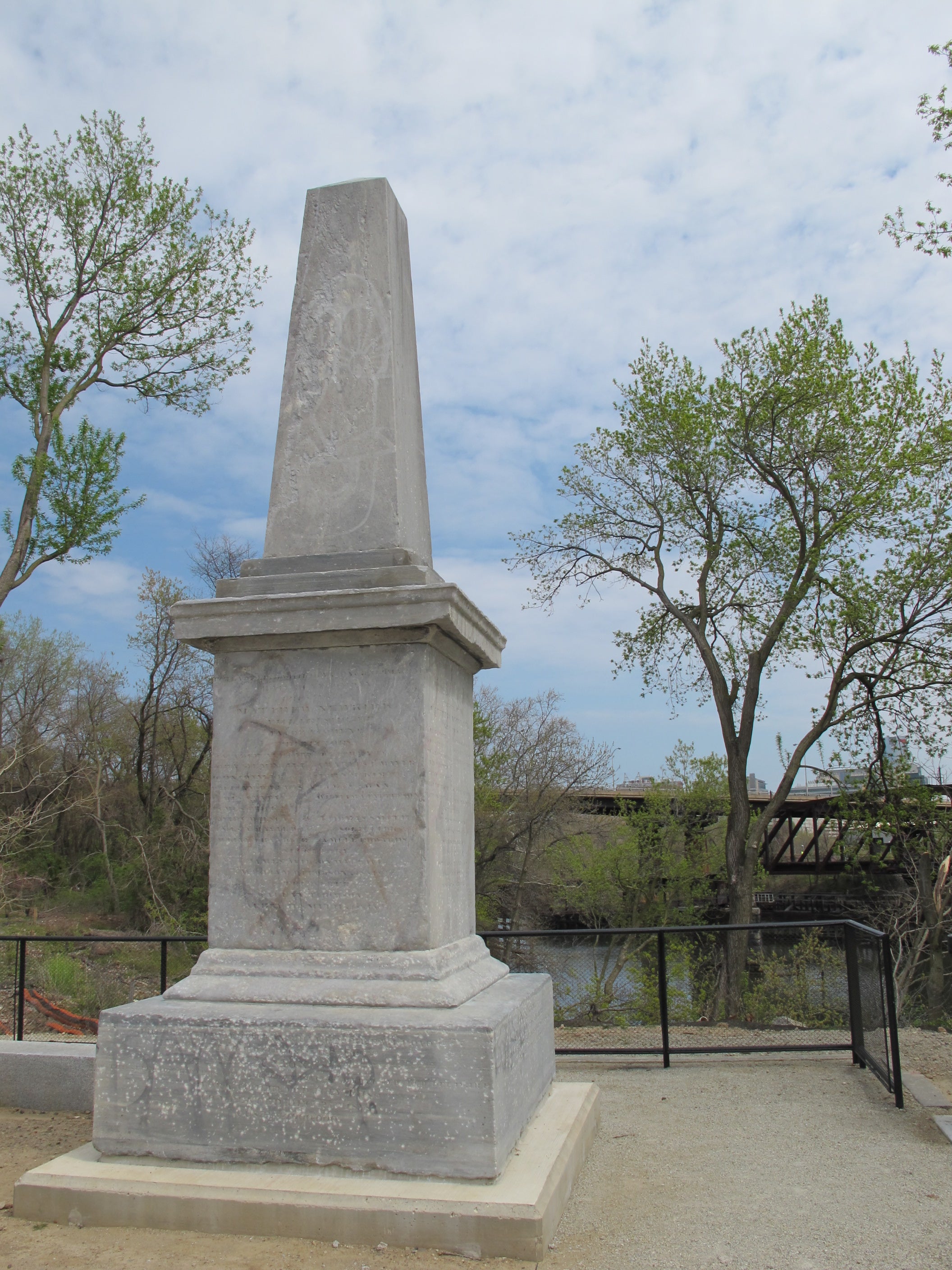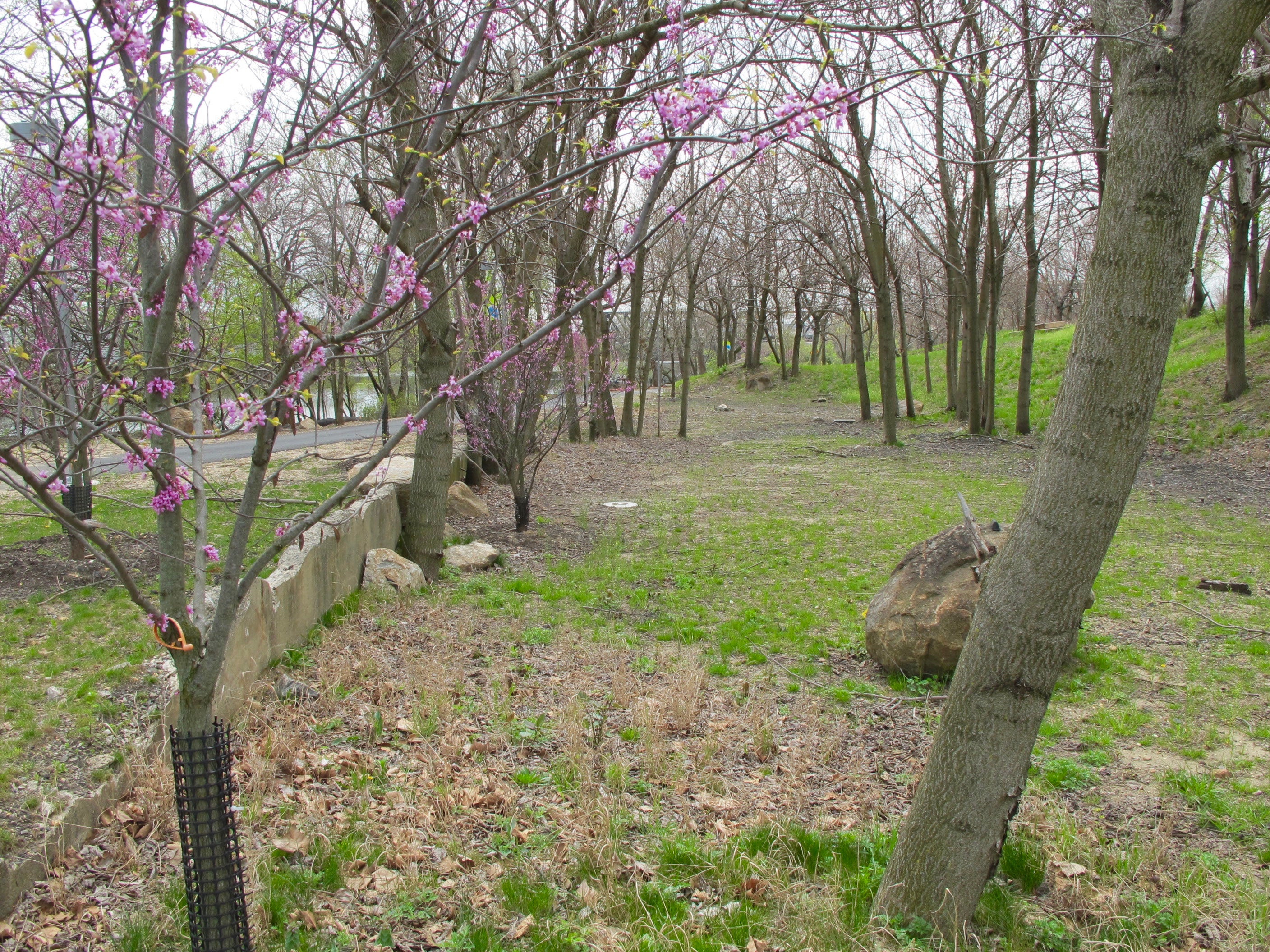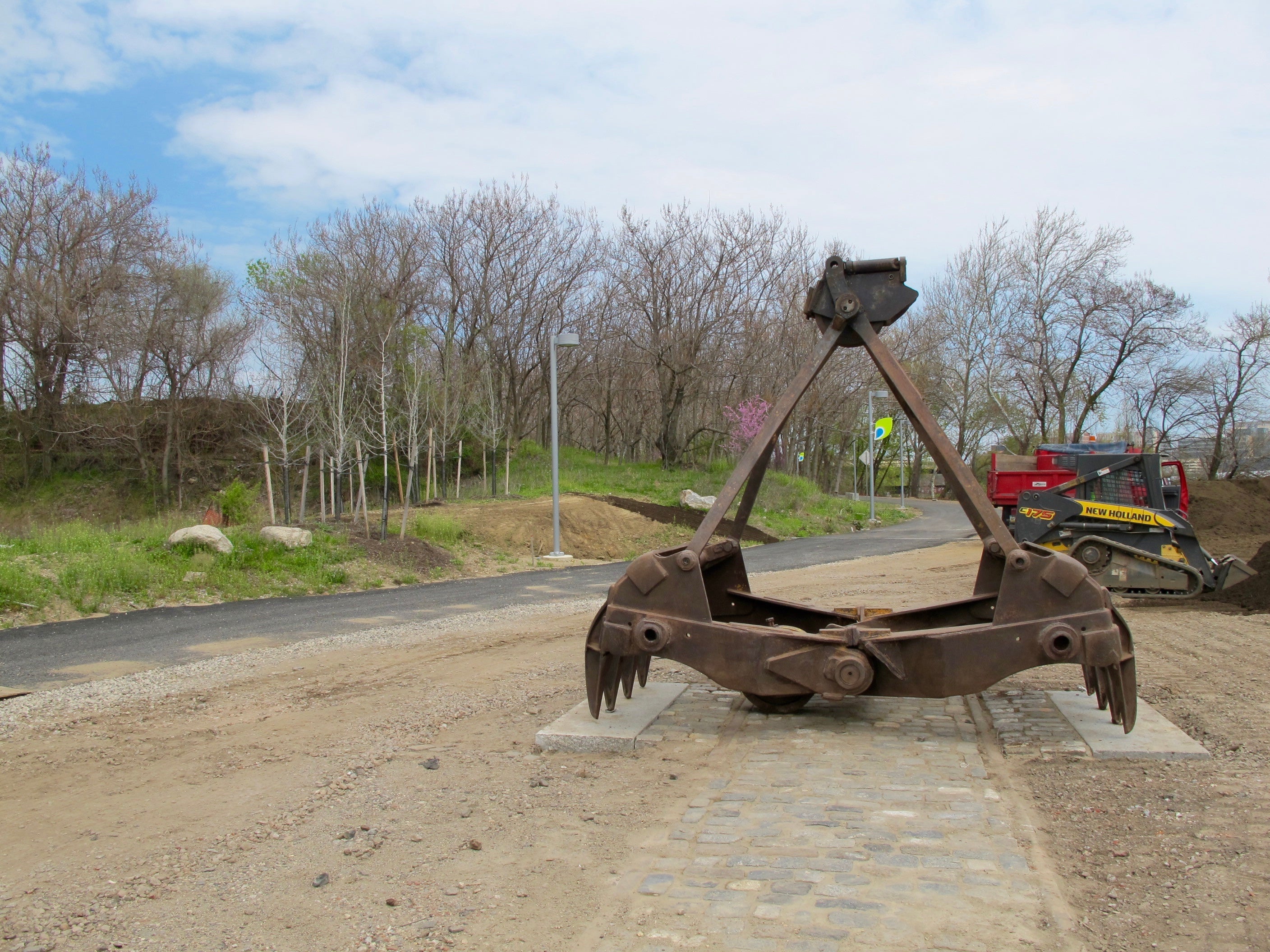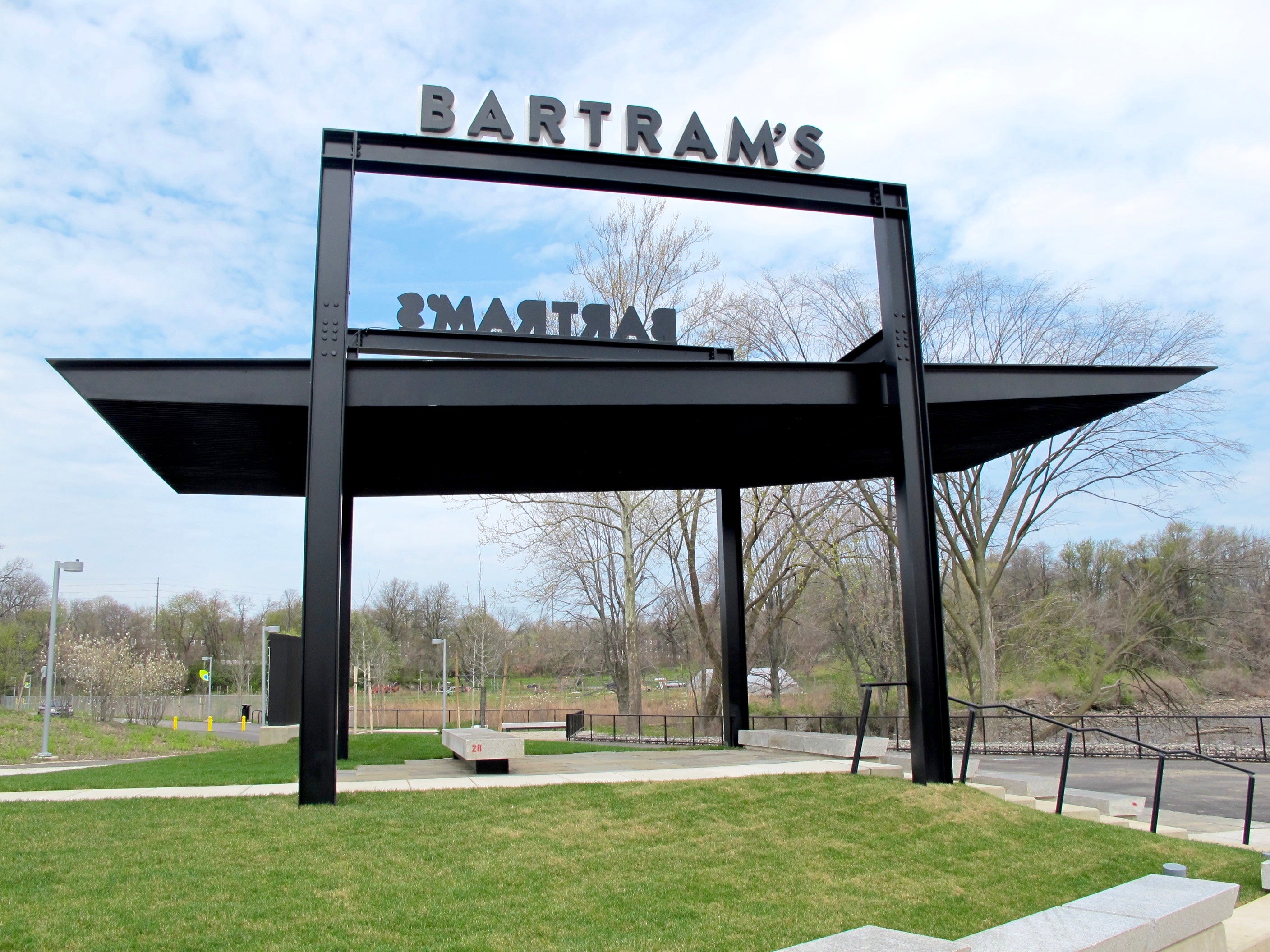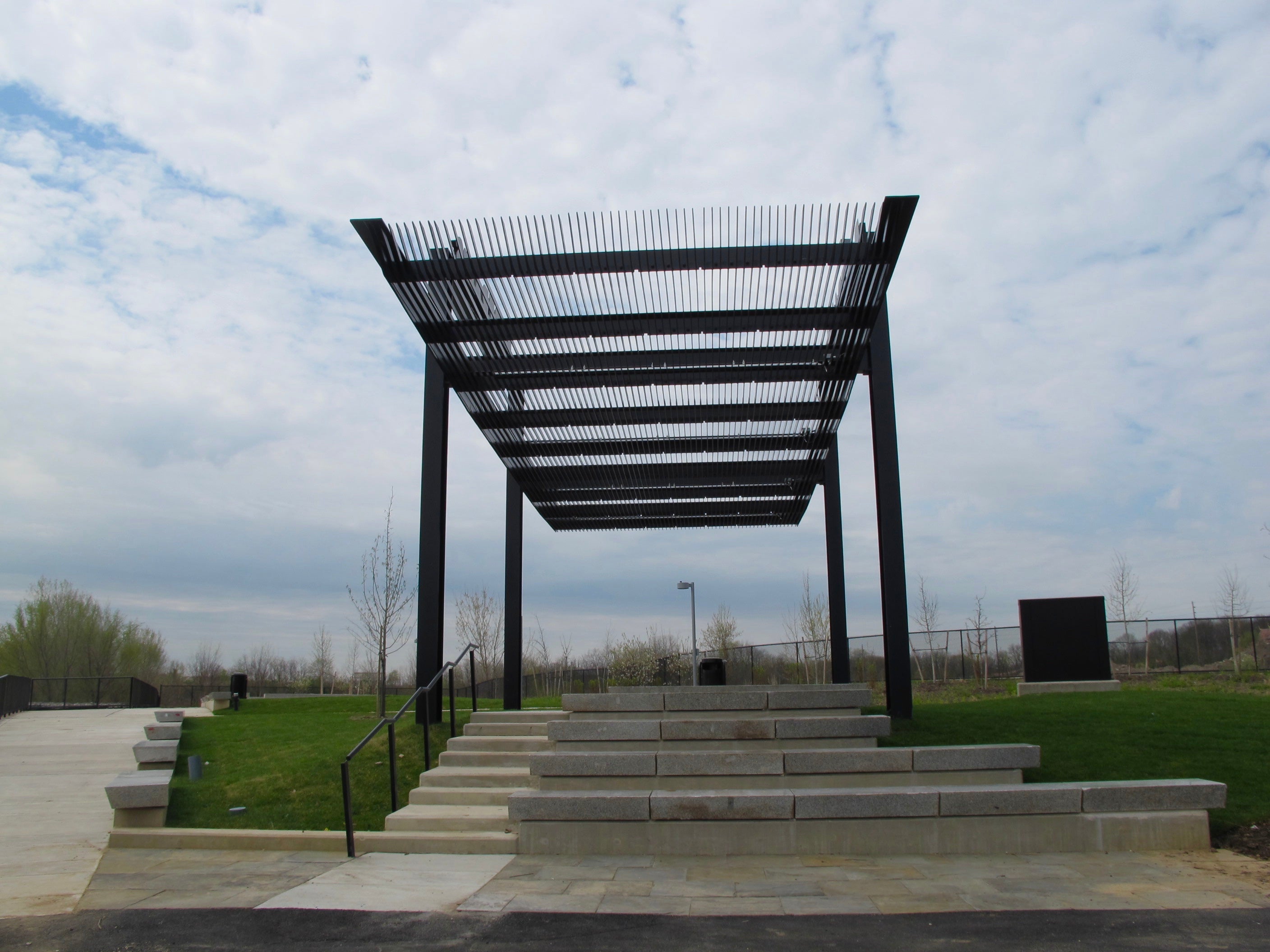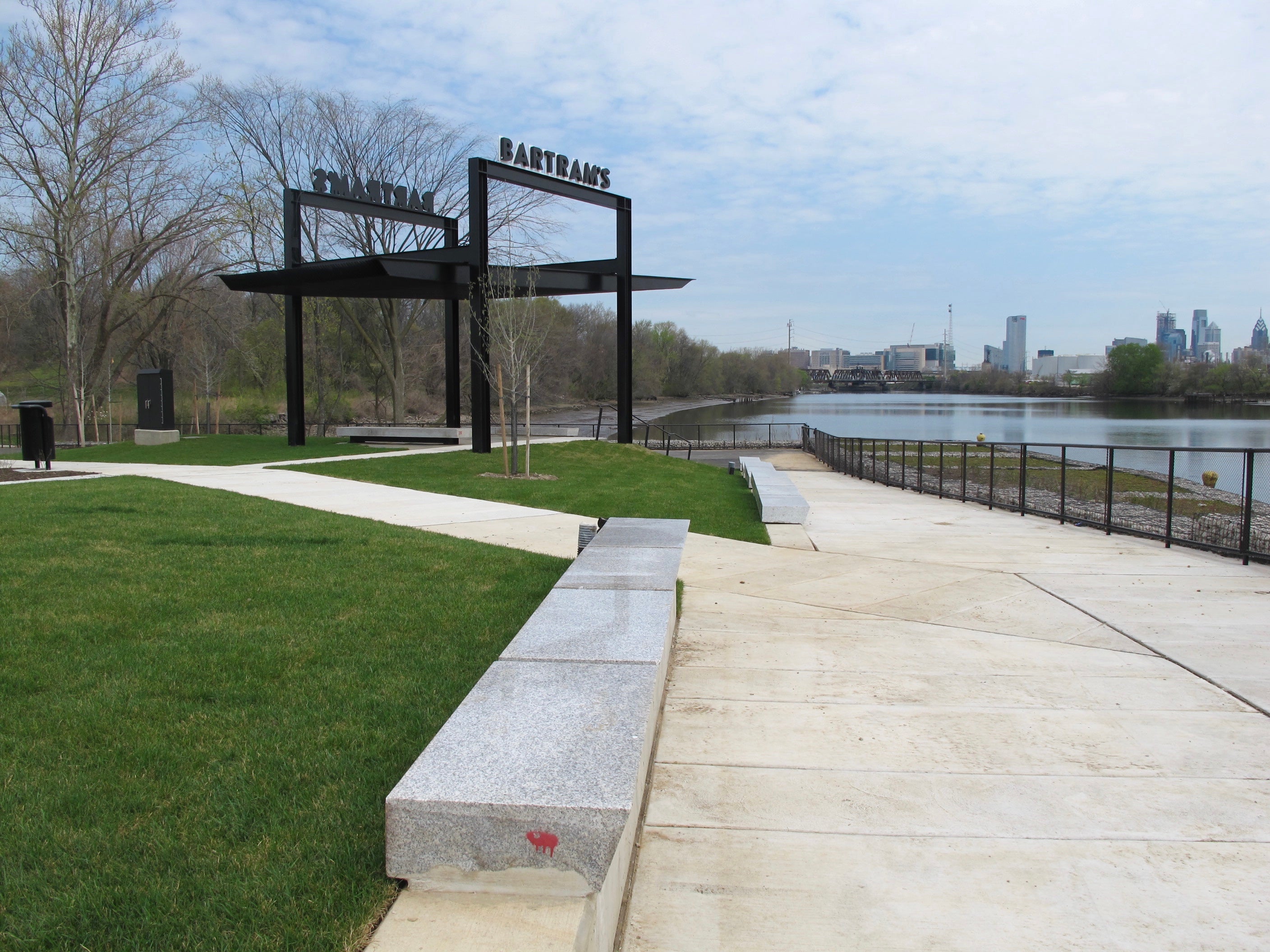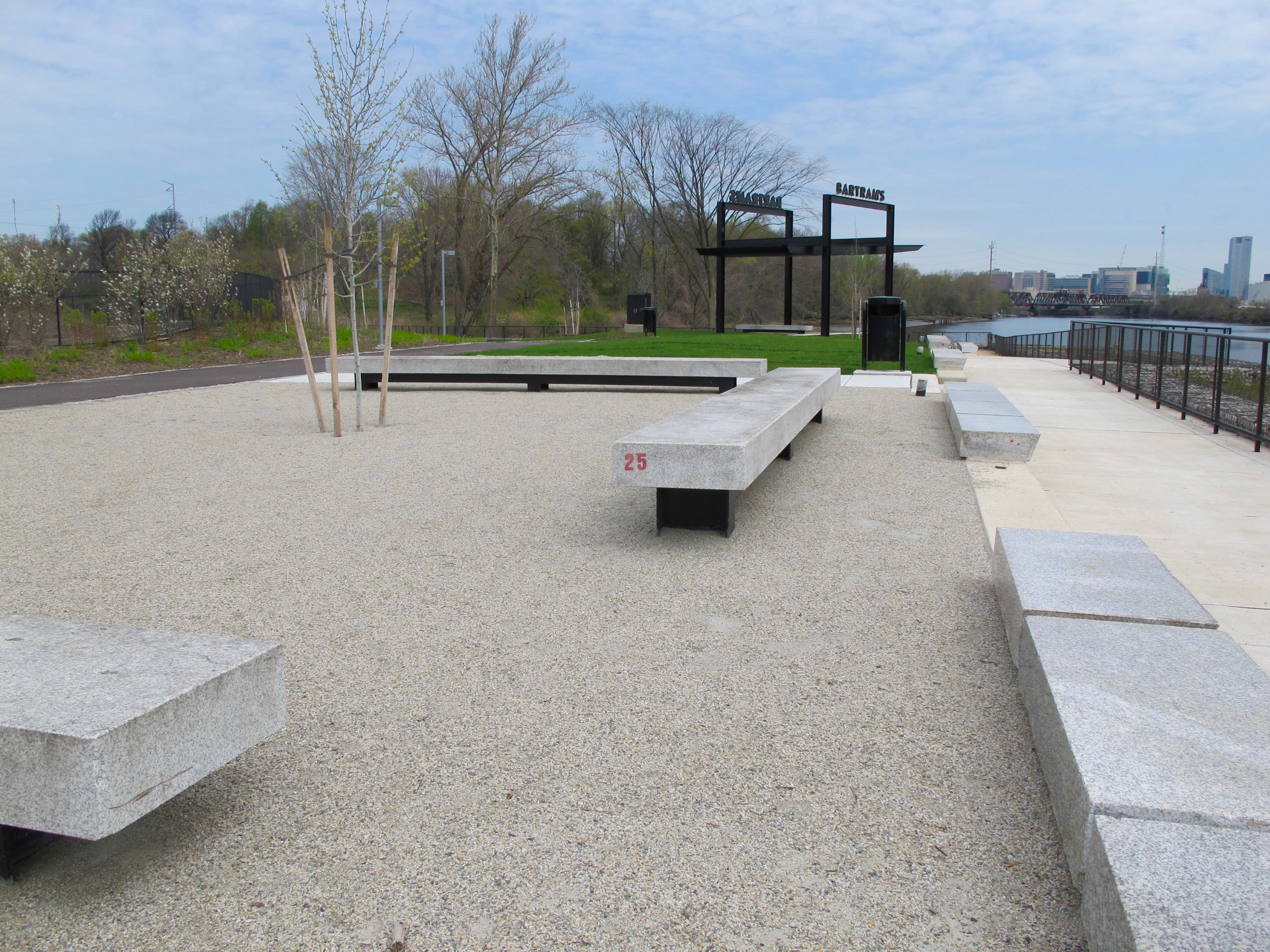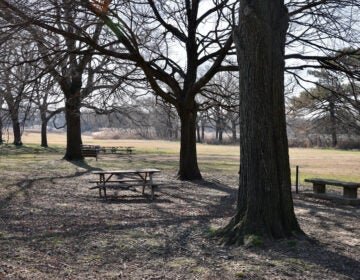Bartram’s Mile trail aims to connect Southwest Philly neighbors to river and city beyond
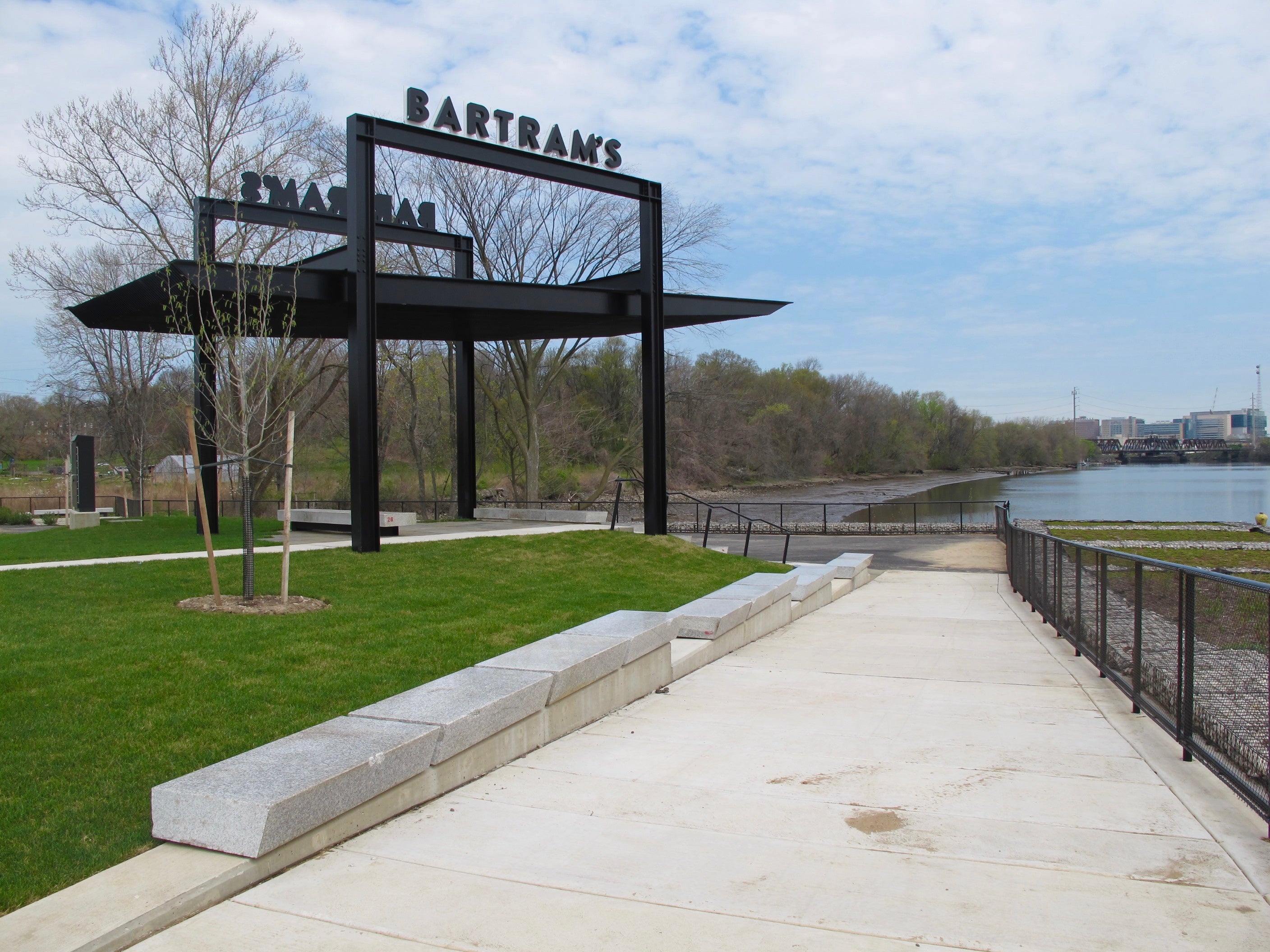
As the Schuylkill River Trail has grown southward from Center City along the eastern bank of the tidal Schuylkill, it’s gained a boardwalk, a crescent, two skate parks, all the while spurring development nearby. When the newest segment, called Bartram’s Mile, opens on Saturday, it will mark another new milestone for the riverfront trail as it reaches deeper into Southwest Philadelphia on the river’s western side.
Bartram’s Mile opens at a moment when Philadelphia is focused on finding new ways to create great public spaces in neighborhoods beyond Center City through initiatives like Reimagining the Civic Commons and the Kenney administration’s Rebuild program. As the trail grows south, so too does its promise of becoming a powerful urban connector — an equalizer that links disparate neighborhoods. The road to that connectivity runs through Bartram’s Garden.
Bartram’s Garden is a lush and beautiful historic site along the river that has long felt cloistered off, ringed in by low-rise public housing, railroad tracks, and a mix of industrial properties. But in recent years Bartram’s Garden has been changing, focusing on ways to better serve its Southwest Philadelphia neighbors. It’s added more community-oriented programming, like its active farm. In just a year and a half of its existence, Bartram’s community boating program has served more than 8,000 people. When the trail opens, it will also add a community biking program.
“For a long time, we’ve been an island of green space on the tidal Schuylkill River,” said Justin DiBerardinis, director of community relations for Bartram’s Garden. “But the tide is turning – more of this river belongs to people down here.” As the trail opens, more of the land around Bartram’s Garden will belong to people too.
Bartram’s Mile is designed to connect neighbors in Southwest Philly to the river, to new places to walk and bike, and ultimately with Center City and beyond via the Schuylkill River Trail. Still, here the trail is less about extending a convenient recreational amenity for well-heeled Center City and more about building more equitable public space for Southwest Philly residents.
For DiBerardinis, the Mile has the potential to enhance Bartram’s Garden role as a “common space where Southwest meets the rest of the city, transcending cultural, spatial, and class distinctions.” And, he adds, it will help dissolve the “geographic segregation of Southwest Philadelphia, which is very close to – but very cut off from – the rest of the city.”
The design for Bartram’s Mile by the landscape firm Andropogon is firmly guided by the existing landscape: In places it rolls, lush and leafy like Bartram’s Garden, while still bearing the scars of the Lower Schuylkill’s industrial past with grace. Even though it’s similar in finish to other sections of the trail, it’s placement creates opportunities to extend the reach of Bartram’s Garden’s community programs.
On a visit last week, the whistles of spring birdsong met the low rumble of a backhoe on the breeze. Bartram’s Mile starts where a future swing bridge will connect it with Grays Ferry Crescent across the river. Its trailhead is the 180-year old Newkirk Monument, a 15-foot tall marble obelisk that was moved to Bartram’s Mile last year, placed like a folly in the landscape.
The trail moves through tall trees, past crater-like forms left behind by National Heat and Power’s storage tanks and sculpted into coves by the designers. The largest is ringed by volunteer paulownia trees, which will soon flower purple, and accented with newly planted redbuds.
At 49th Street, there’s a wide trailhead with an industrial claw salvaged from the city sanitation facility up the block, set like a sculpture. Bartram’s Mile then continues for two blocks on Botanic Avenue, which has never looked better thanks to new sidewalks, lighting, plantings, and stormwater infrastructure.
At 51st Street, the trail jogs toward the river, ducks underneath a railroad bridge near Bartram’s boat dock. It winds uphill past a rolling, wispy meadow then past Bartram’s Garden’s barn, house and garden, before heading back downhill through the community farm and orchard. Then, at 56th Street, it turns toward the river.
The trail ends at a new riverside plaza where 56th Street meets the Schuylkill, where the focus is on riverward skyline views. A tall black metal pergola anchors the plaza, shading four rows of stepped granite benches (pieces salvaged from the old Dilworth Plaza), and it’s topped with bold black and white letters that announce “Bartram’s.”
While the trail will provide new ways to go to and through Bartram’s Garden, it’s this plaza that has DiBerardinis especially excited about hosting community-oriented programming, like concerts and movie nights.
“There are not a lot of spaces for people to have experiences like that down here, at a great gathering space right on the water, right at the river’s edge,” he said.
On a warm afternoon, Germantown residents Tony Miles and his fiancée Carrie Townsend admired the new plaza and the old view. Townsend found it a meditative space, and was envisioning their wedding photos being taken under the pergola. Miles was quick to reflect on his childhood in the neighborhood. He moved to the Bartram Village public housing complex when he was 10 years old in 1970, and has very fond memories of playing along the river, making rafts, fishing, climbing trees and sledding at Bartram’s Garden.
“I used to know every inch of this place,” he recalled, gesturing to the shoreline. Looking up at the plaza he said, “I’m glad I’m around to see this.”
He’s not alone; the road to Bartram’s Mile has been a long one. It’s gone from a concept in Philadelphia Parks & Recreation’s Green2015 plan in 2010, through a 2012-2013 community engagement process to inform the design, led by Philadelphia Parks & Recreation and PennPraxis*, in partnership with Schuylkill River Development Corporation and the John Bartram Association.
The last bit of the Mile’s $6.7 million project cost came from a $250,000 grant through the Reimagining the Civic Commons initiative. The initiative, a joint effort by the John S. and James L. Knight and William Penn foundations, provided funding to five public space projects and to the nonprofit Fairmount Park Conservancy. Bartram’s Mile is the first of the five Civic Commons projects to cross the construction finish line. Each Civic Commons project is about recasting legacy civic assets through investments that help serve community needs, provide access to nature and gathering spaces, and test out new ideas in public placemaking. In that way the initiative is very much a testing ground for the Kenney administration’s Rebuild projects.
For Kathryn Ott Lovell, Philadelphia’s Parks and Recreation commissioner and former director of the Fairmount Park Conservancy, Bartram’s Mile points to the path ahead.
“It’s going to draw more people to the garden, but the best part is that for folks in Southwest Philadelphia it’s going to create that connection to the water, with amazing public space and something to see and do there,” Ott Lovell said. “We’ve done such great work on the trail in Center City… are we really doing that in neighborhoods? Bartram’s helps us realize that we can and we should.”
At the trail’s grand opening celebration on Saturday, the best of Bartram’s – the Mile full of people, boats afloat, spring plants for sale, the house and gardens open – will mark Earth Day and some new beginnings for a very old spot on the Lower Schuylkill.
*NOTE: PlanPhilly was part of PennPraxis at the time.
WHYY is your source for fact-based, in-depth journalism and information. As a nonprofit organization, we rely on financial support from readers like you. Please give today.




